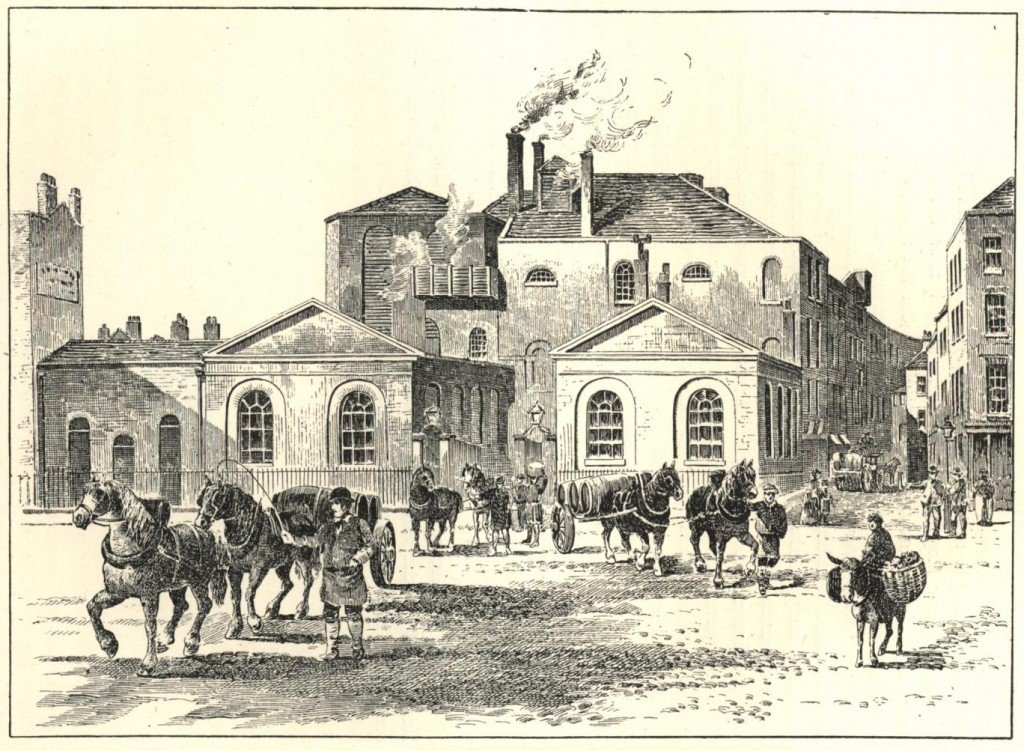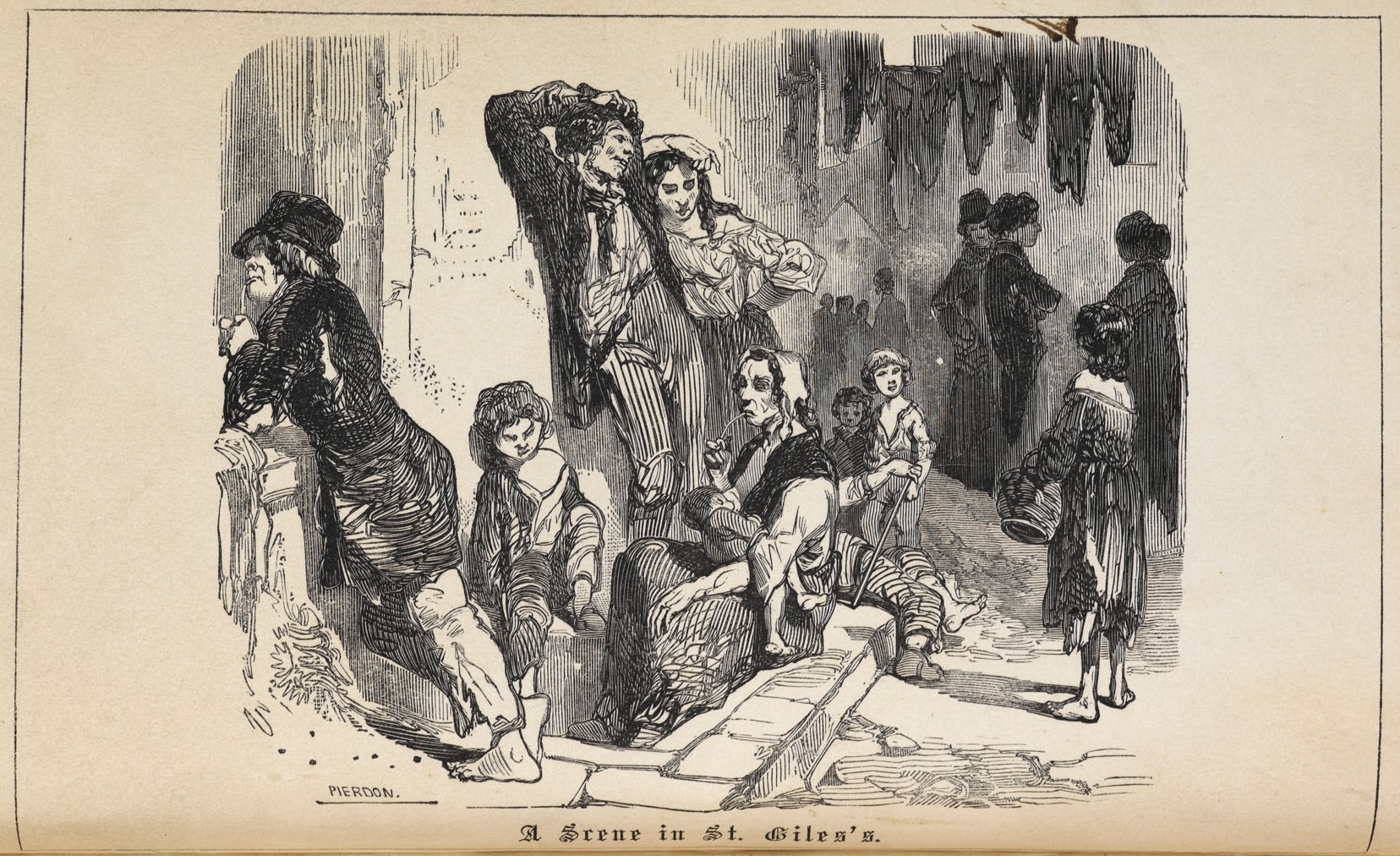On an ordinary October evening in 1814, the streets of London witnessed an extraordinary and tragic event – the London Beer Flood. This bizarre and devastating incident occurred in the St. Giles district, an area known for its dense population and impoverished living conditions. A massive vat at the Horse Shoe Brewery, brimming with over 135,000 gallons of fermenting porter, ruptured without warning. This calamity unleashed a tidal wave of beer that wreaked havoc in the neighborhood, claiming lives and destroying homes.
This article delves into the details of the London Beer Flood, exploring the events that led up to the disaster, its immediate impact, and the aftermath. We examine how a seemingly innocuous staple like beer turned into an agent of destruction and tragedy.
What Was the London Beer Flood?
The London Beer Flood, a disaster as strange as it is tragic, began on the afternoon of October 17, 1814, at the Meux & Co’s Horse Shoe Brewery on Tottenham Court Road. The brewery was a prominent feature in the St. Giles neighborhood of London, and it was known for its large-scale production of porter, a dark and popular beer of the time.
The Catastrophic Failure
The calamity started with the failure of a massive wooden fermentation vat. This vat, one of several in the brewery, was enormous, holding approximately 135,000 gallons of porter. It was reported that one of the iron hoops around the vat snapped, a seemingly minor incident that led to catastrophic consequences.
The Domino Effect
The force of the beer bursting from the vat was so powerful that it caused a domino effect, rupturing several more vats in a chain reaction. In a matter of moments, more than 320,000 gallons of beer were released in a violent flood. The wave of porter smashed through the brewery’s walls, pouring out onto the streets and sweeping through the neighborhood.
The Layout of St. Giles
The St. Giles area, where the brewery was located, was densely populated and impoverished. The houses were closely packed, many of them dilapidated and inhabited by families living in cramped conditions. The streets were narrow, and the basements of many homes were used as living spaces, which proved to be particularly disastrous when the beer flood struck.
The Immediate Aftermath
As the torrent of beer rushed through the streets, it flooded homes, knocked down walls, and inundated the local pub. People were caught unawares by the sudden deluge, leading to a scene of chaos and confusion. The floodwaters caused significant damage to the neighborhood and tragically claimed several lives.
The Impact of the London Beer Flood
The aftermath of the London Beer Flood on October 17, 1814, was marked by devastation and loss in the densely populated St. Giles district. The flood, caused by over 320,000 gallons of beer bursting from the Horse Shoe Brewery, left a trail of destruction that affected many lives and properties.
Loss of Lives
One of the most tragic outcomes of the flood was the loss of life. Official records state that eight people lost their lives as a result of the disaster. Victims included people who were gathered in a nearby house mourning a toddler’s death when they were suddenly engulfed by the wave of beer. The flood’s force and the unexpected nature of the event left residents little time to escape, trapping some in their homes.
Destruction of Homes and Property
The torrent of beer caused extensive damage to the St. Giles neighborhood. Houses were flooded, and in some cases, walls collapsed under the pressure of the beer wave, leading to further casualties and injuries. The floodwaters inundated basements and lower levels of buildings, many of which were poorly constructed and crowded with residents.
The Economic Toll
Beyond the immediate physical damage, the beer flood had significant economic repercussions. The brewery faced financial loss due to the destruction of a large quantity of its product. For the residents of St. Giles, many of whom were already living in poverty, the flood exacerbated their hardships, destroying their homes and possessions with little hope of compensation.
The Response and Recovery
The response to the disaster involved local authorities and the brewery company. In the days following the flood, efforts were made to clean up the debris and provide aid to those affected. However, the recovery process was slow, with the neighborhood reeling from the impact of the disaster for a long time.
The Influence of the London Beer Flood on Brewery Safety

The London Beer Flood of 1814, while a tragic event, served as a crucial turning point in the brewing industry, particularly in terms of safety standards and regulations. The disaster highlighted the dangers of large-scale industrial brewing and prompted a reevaluation of brewery practices, particularly in the design and maintenance of fermentation vats.
Raising Awareness of Industrial Hazards
Prior to the beer flood, brewery safety regulations were minimal, and the risks associated with brewing on a large scale were not fully understood. The disaster brought to light the potential hazards of storing large quantities of liquid in inadequately constructed containers. The catastrophic failure of the vat at the Horse Shoe Brewery underscored the need for better construction, maintenance, and inspection of such storage vessels.
Changes in Brewery Design and Construction
In the wake of the beer flood, there was an increased focus on the structural integrity of brewing vats and the buildings housing them. Breweries began to implement more rigorous standards in vat construction, opting for materials and designs that could withstand the pressures of large-scale beer fermentation. Additionally, the layout of breweries was reconsidered to minimize the risk of damage and casualties in the event of a similar incident.
Influence on Legislation and Safety Practices
The beer flood also influenced the development of industrial safety legislation. It became a case study of the need for stricter industrial regulations and oversight. While immediate legislative changes specific to brewery safety may not have been enacted, the incident contributed to the growing awareness of industrial safety, eventually leading to more comprehensive laws and standards in various industrial sectors.
Conclusion
Today, the London Beer Flood is remembered not just as an unusual historical event but as a catalyst for change in industrial safety practices. Its legacy is evident in the stringent safety standards and regular inspections that breweries and other industrial facilities undergo. The tragedy serves as a reminder of the importance of safety in industrial operations, highlighting the need for continuous vigilance and improvement in safety protocols.


